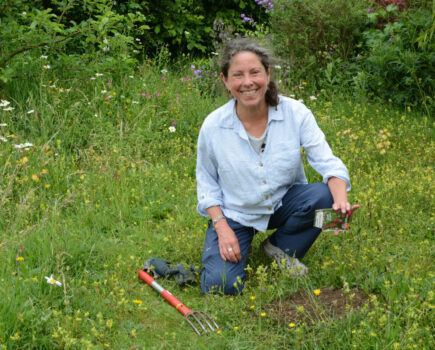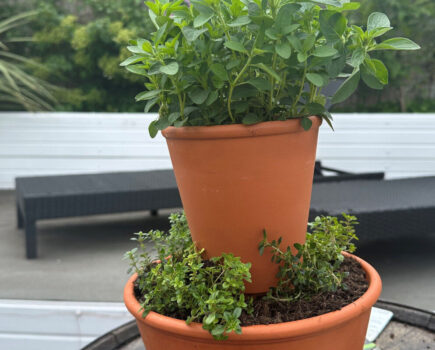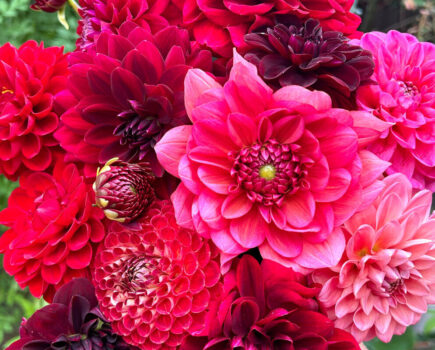Lucy explains how to make the most of the next few weeks
A backbone to the salad bowl, lettuce is far more than a bulking agent – it’s a beautiful and delicious leaf, in its own right. The delicate flavours and refreshing crunch make lettuce one of the most popular salad leaves around (and there are plenty!) so can you guarantee success, and is there more to lettuce than you think? Absolutely!
When it comes to growing lettuce I follow a few guidelines. To ensure a succession of leaves in summer, I continually sow a fresh batch a fortnight after I’ve planted my lettuce seedlings out (I prefer to sow into modules to maximise soil space). I position my early, spring lettuces in a sunny spot to maximise warmth and growth rate, then as summer heats up I choose a shadier, cooler, moister spot to deter bolting (this is when lettuces start developing a tall central flower spike). Night patrols dent slug and snail numbers in damp weather, and rotating crops to new beds stops cutworms (these nibble off lettuce seedlings at the base).
Now, just look at these lovely leaves – why on earth would you habitually pick up an iceberg in the supermarket ever again? I love growing a range of lettuces – the colours and flavours available to gardeners is far superior to anything shop-bought. There are soft, velvety butterheads, like ‘Gustav’s Salad’, and hearting romains such as the large ‘Lobjoit’s Green Cos’ or the ever-popular compact ‘Little Gem’ (have you tried a red gem such as ‘Moonred’? I love them). You can grow classic loose-leaf types such as ‘Red Salad Bowl’ or striking oak-leaf forms like ‘Cocarde’. There are mild crispheads such as ‘Lakeland’ and frilly, flavour-punching forms like ‘Green Batavia’ and ‘Lollo Bionda’. Plus, you can grow any of these as a baby cut-and-come-again crop, or allow them to bulk up and mature for bigger harvests. Honestly, what’s not to love?
…………….
Try alternative broccolis
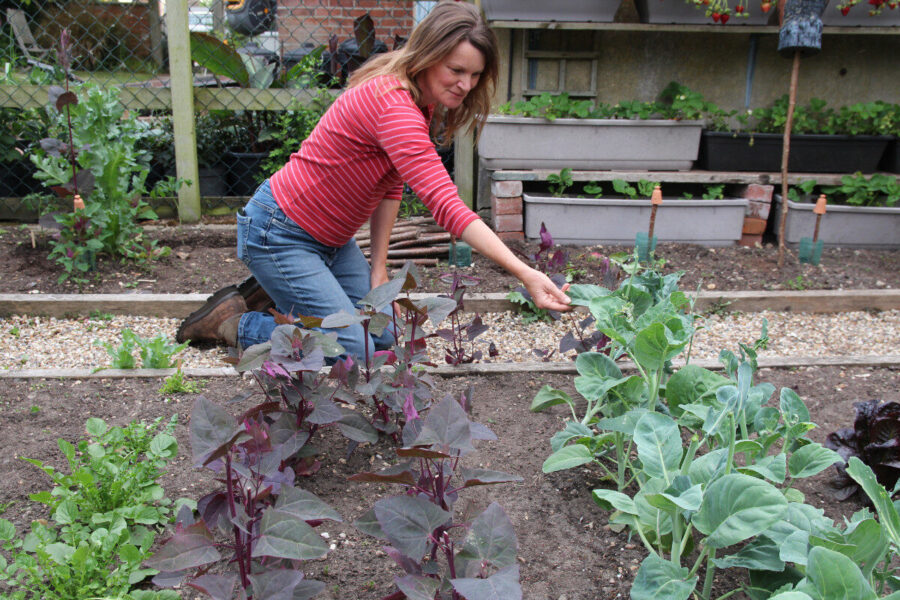
Having an impressive amount of patience is a great trait to own if you’re a gardener, but equally, it’s handy to know a few shortcuts. Broccoli (also known as calabrese) is a hugely popular crop with children and adults, but plants can take 14-16 weeks to mature from sowing – that’s a lot of waiting! We love eating calabrese in our house, so I do have some plants sown, but I’ve also been relying on quicker to mature broccoli relatives. Broccoli raab (also called rapini or cimi di rapa), Chinese broccoli (Kailaan) and choy sum all give pickings more rapidly than calabrese – you’ll often get harvests 8-10 weeks after sowing. Broccoli raab is best sown directly into the soil, but kailaan and choy sum can be sown into modules, ready to jump into beds as soon as they’re available. The yield may be smaller than calabrese, but you’ll get your broccoli hit at least a whole month earlier.
……………..
Step by Step – Do I need to thin out fruits?
Congestion, spread of pests and disease, and inferior quality fruits are results no grow your owner wants, and so frequently gardeners step in to encourage perfect harvests. But, this task can cause confusion because some fruits are best thinned out whereas others can be left with no intervention from us. Are you confused? Then let me help!
For good-sized apples, pears and peaches thin out the fruits if your trees have set a good number. I’ll thin these apples to leave one or two per cluster, otherwise they’ll all grow (I’ll do the same with my pears). Peaches can be thinned to one fruit every 25-30cm of stem. When you thin out, sacrifice any disfigured or small fruits to leave just the very best.
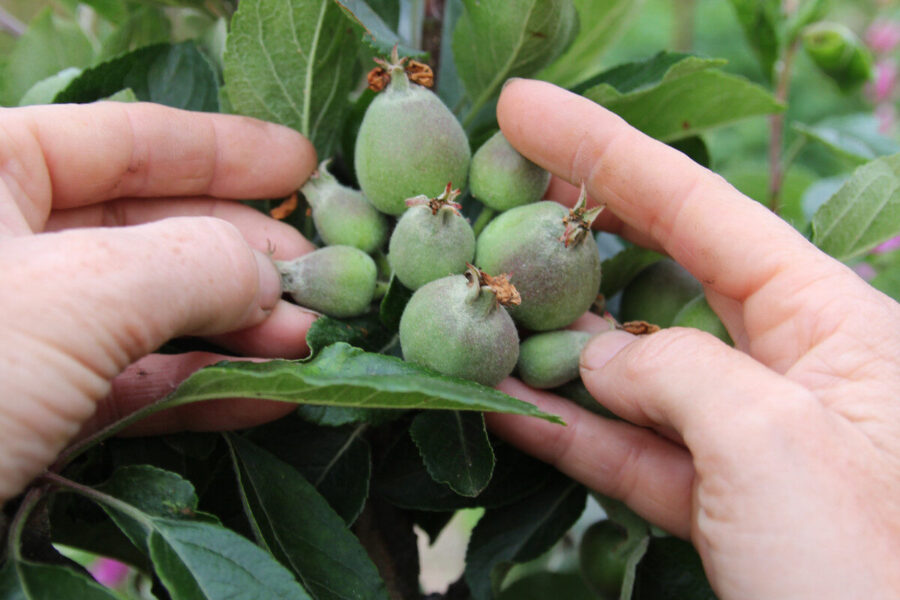
You’ll be pleased to know that crops that produce lots of smaller fruits (e.g. cherries, damsons, sloes) don’t need any thinning out – to do so would likely cause more harm than good as we’d damage the fruits by attempting to intervene. So relax with these edibles, let nature take its course because the trees will naturally shed what they can’t carry.
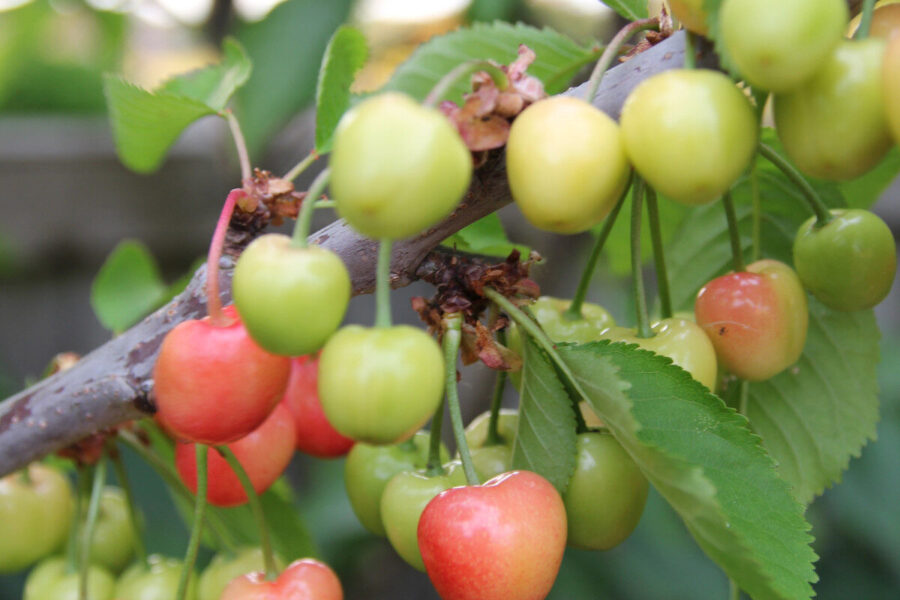
Plums are notorious for setting a lot of fruits in some years, and very few in others. So, in some years you may not need to thin out the fruits at all. In years where set is heavy, though, thin out to reduce the weight of fruit on the branches otherwise they could snap. A rough spacing of 7-8cm apart is a guide, but weight reduction is the main aim.
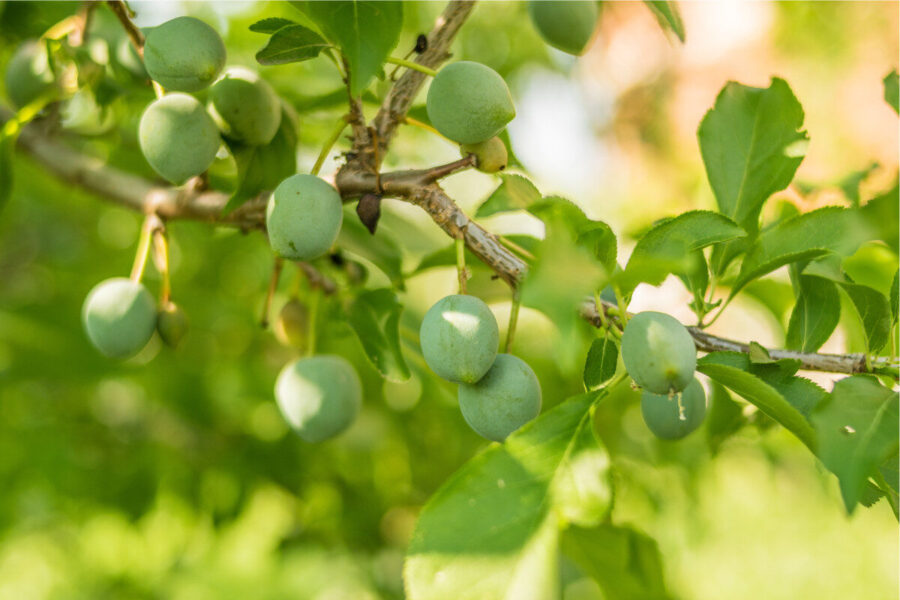
………………………
Top tip – Enjoy self-seeding edibles
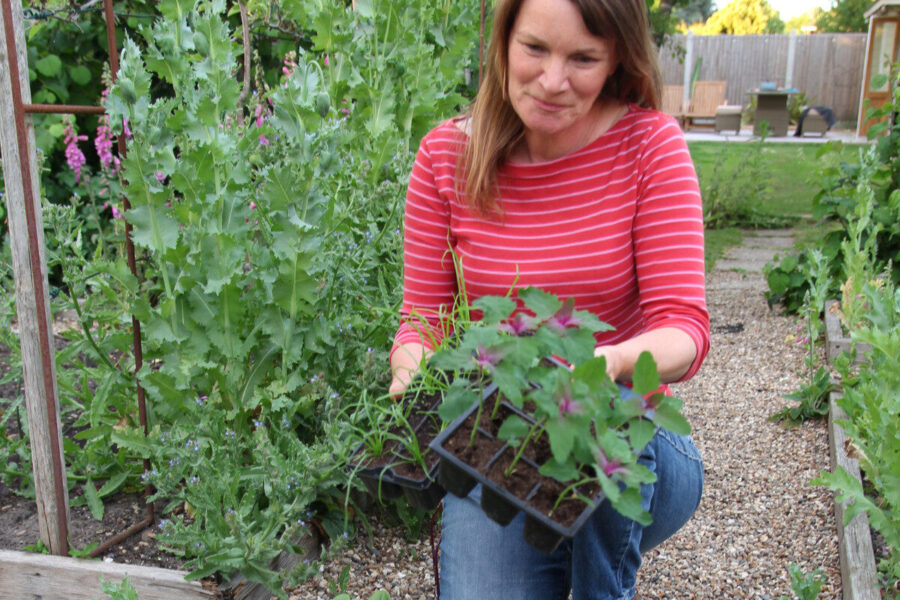
In these time-poor days it’s great to embrace nature’s helping hand, and I’ve been doing just that on my plot this week. With limited time and lots to juggle, I’ve been struggling to make second sowings of many of my favourite edibles, so I’m incredibly grateful that many will happily self-seed around the vegetable beds. Red orach, herb fennel, minutina, horn of plenty, amaranth, agretti, Malabar spinach, summer purslane, American land cress, tree spinach, New Zealand spinach, red-veined sorrel and even oak-leaf lettuce have all self-sown into my soil – that’s saved me an awful lot of work! Of course, they’ve self-sown where they’ve wanted to, and frequently that’s in areas where there’s not room for them to fully mature. So I’ve been busy moving them into modules to bulk up, and then I can plant them where I want them. Result!
Why not try – Chinese violet cress
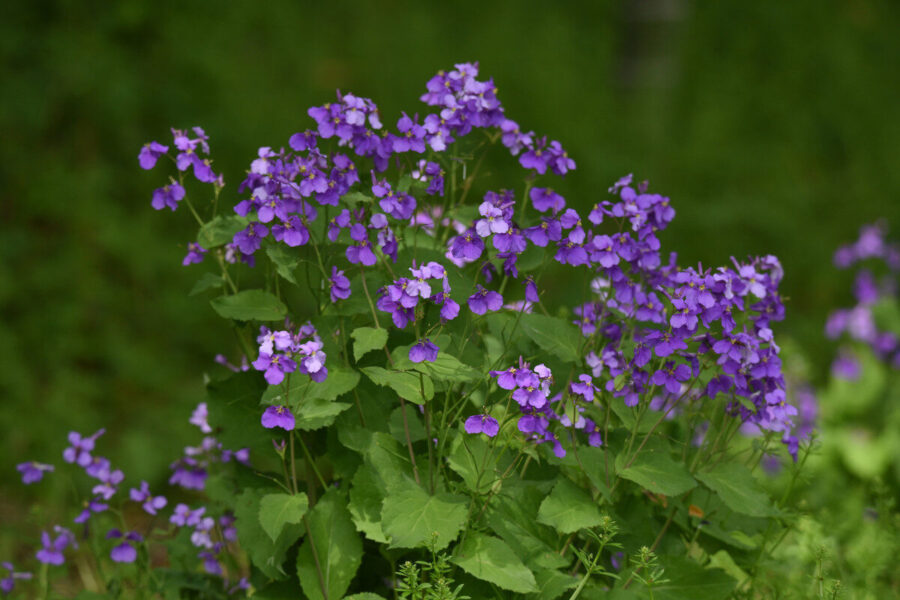
If I give you the Latin name of this edible – Orychophragmus violaceus – you can understand why from this point forward, we’ll call it by its common name! Botanical mouthfuls aside, this pretty biennial plant is incredibly useful as a salad leaf. Sown in the next few weeks, the seedlings will initially develop a rosette of leaves, then, in spring they’ll throw up a tall, striking flower spike laced with many lilac flowers. Both the young leaves and flowers are edible, so you can make some leafy harvests this autumn (be sure to keep enough foliage in tact so that it can grow healthily through until spring) then you can harvest more leaves and ultimately flowers come spring. This is the first year I’ve tried growing Chinese violet cress – it’s germinated very well and I’m excited to taste it. I have it on good authority that it’s delicious, so, I’ll let you know!
……………..
Five quick jobs
- Weeds can crop up at an alarming rate on the plot after irrigation or rain, and it’s tricky to know where to turn. Focus your efforts on edibles that struggle to compete with competition, such as onions, scallions, garlic, shallots and leeks. Those narrow, upright leaves don’t smother out weeds, so they need all the help they can get.
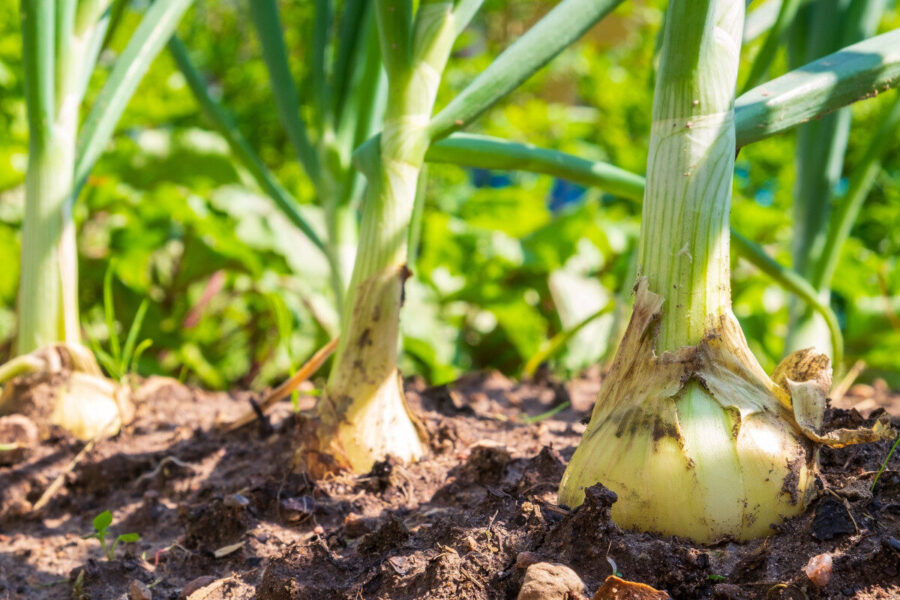
- Running out of tomato feed? Don’t fret – make a plant-based alternative. Comfrey is a vigorous perennial with extensive roots that draw up many elements from the soil – including potash (a major tomato nutrient). Harvest a big bundle of its leaves, steep in water for a fortnight and use the resulting liquor on toms, plus chillies and aubergines.
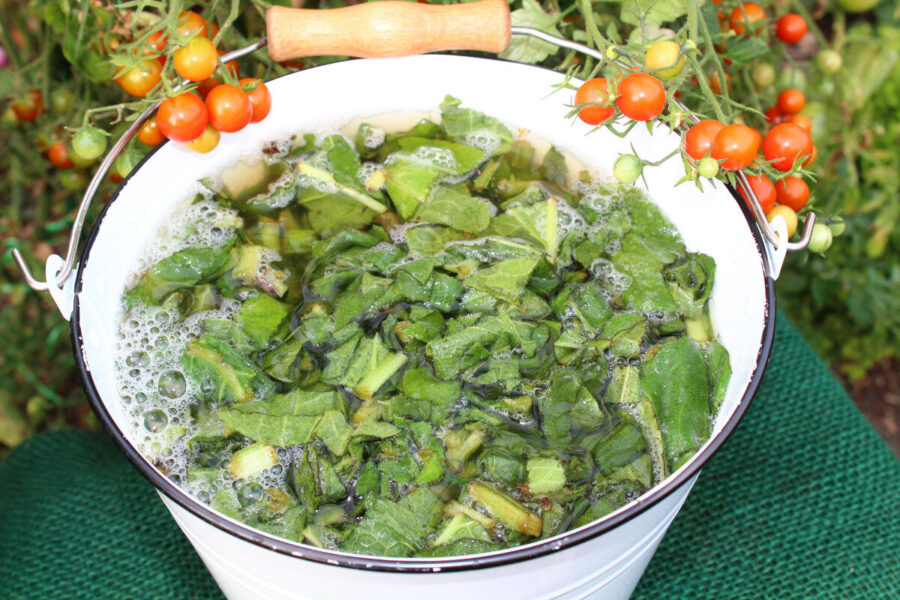
- Grape owners could well be looking at a tangle of vines right now, so, what to do? You can, of course leave the plant to its own devices but if you’d like to maximise yield then locate any bunches of grapes and cut off the stem just past this point. This encourages the vine to push sap into the fruits, aiding swelling for autumn harvests.
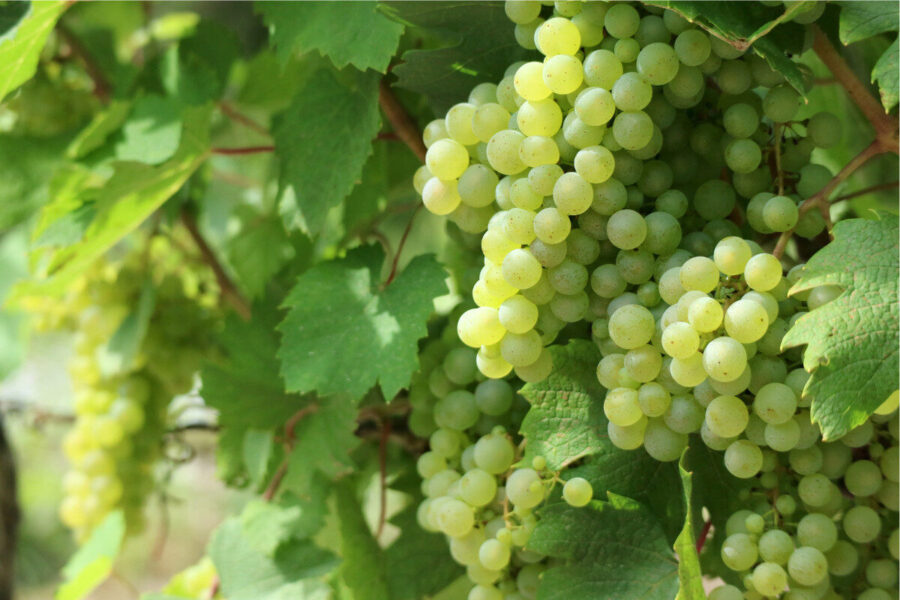
- If you live in a mild climate, why not stretch the seasons with late sowings of courgettes, snackbox cucumbers and dwarf French beans? Often our initial sowings of these edibles burn out come late August, but one made now will begin cropping in 6-8 weeks time, picking up the harvest baton and running with it way into October.
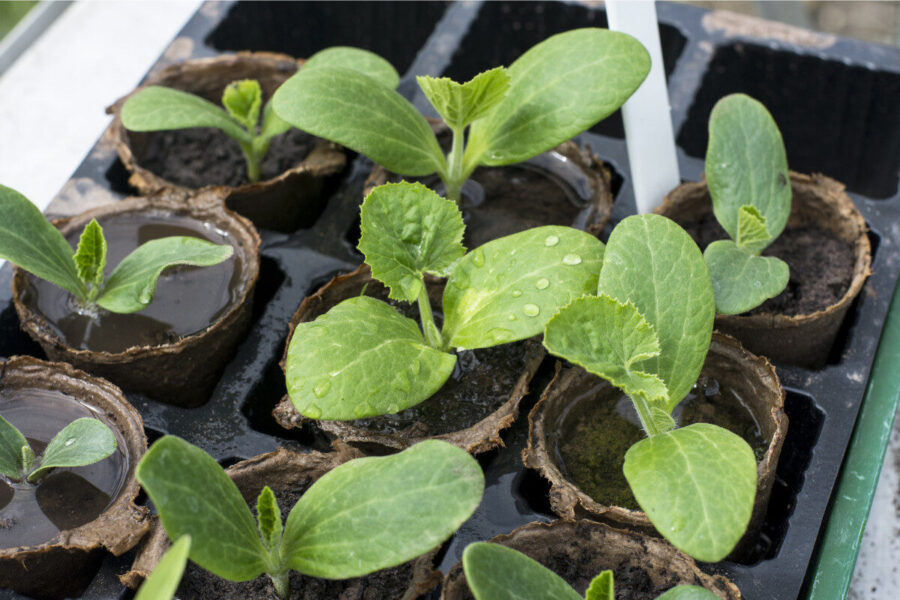
- Currants and gooseberries will be ripening up nicely now, and harvesting can begin as soon as they’re palatable. Gooseberries can be picked individually, but currants are more fiddly and are best harvested as whole clusters or ‘strigs’. Wait for the whole strig to ripen before harvesting, then remove by pinching it off at the top.

Find more tips, advice and articles like this at the Amateur Gardening website. Subscribe to Amateur Gardening magazine now


